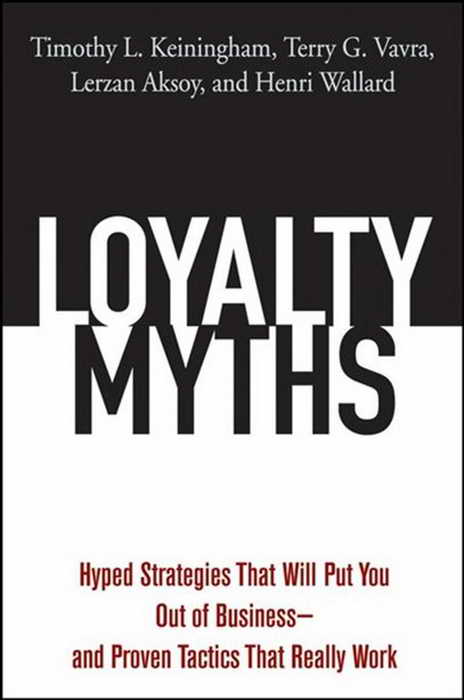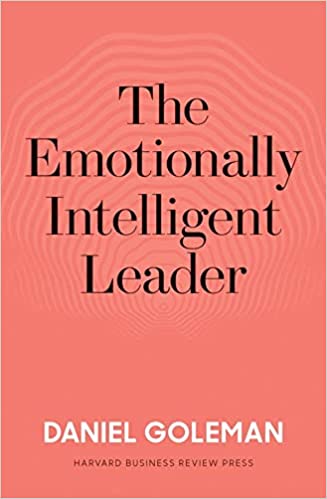The Customer Centricity Playbook: Implement a Winning Strategy Driven by Customer Lifetime Value
RATING


In the book The Customer Centricity Playbook: Implement a Winning Strategy Driven by Customer Lifetime Value, authors Peter Fader and Sarah Toms provide a guide to their version of the fundamental ideas behind customer centricity, but really focusing on customer lifetime value. Peter Fader is the Frances and Pei-Yuan Chia Professor of Marketing at The Wharton School of the University of Pennsylvania. His research is on the analysis of behavioral data to forecast customer shopping/purchasing activities. Sarah E. Toms is executive director and co-founder of Wharton Interactive. She is a demonstrated thought leader in the educational technology field.
The Customer Centricity Playbook has been written as a “one-stop shop” guide for business professionals and executives who are responsible for or are looking to develop their business models to become more adaptive and focused on the most valuable customers. With a serious emphasis on customer lifetime value and future customer lifetime value, this book takes a particularly unique perspective on their notion of “customer centricity”.
The book starts off with an explanation of the need to “maximize customer value”. The way Fader and Toms explain this is then followed in the book with the idea of targeting and acquiring your best customer base, or in other words the customer base which will be most profitable to you. The book then goes on to focus on retention, customer development, CRM, and agile change management. It drives the basic thesis of the book as it attempts to drive home their methodology of what customer centricity is and provide actionable advice on implementing these theories. In practicality, though, the vast majority of the book is focused on Customer Lifetime Value, and finding ways to find consumers who CLV is maximized for your business.
This book does a great job in providing its advice and information in a succinct and straight to the point style which is greatly appreciated. Unlike many other business books nowadays, there is not much room left for droning on about the same topics and information but in fifteen different ways. Moreover, the book does provide some tangibly useful advice in the field of customer base development but be aware that they use “customer centricity” in a very different way than business transformation professionals.
While the book is well written and is succinct, it is unfortunately misleading and misses hitting the nail on the head. The title of the book would lead one to believe that this book will focus on customer centricity in the business model and development sense, but they use a completely different approach and definition of this topic. Their core thesis is that each company has an ideal consumer with a maximized customer lifetime value and then it provides a loose roadmap to finding and engaging those particular customers. While this is definitely an important facet of marketing for businesses to invest in, it is absolutely not what customer-centric business models are built around. They seem to define customer centricity as finding the most valuable customers for the business rather than designing the business to provide the most value for customers – feels a bit backwards.
2019 BEST BUSINESS BOOK, DIGITAL BOOK WORLD
2019 AXIOM BUSINESS BOOK AWARD WINNER
Featured in Forbes, NPR’s Marketplace, and a Google Talk, The Customer Centricity Playbook offers “actionable insights to drive immediate value,” according to Neil Hoyne, Head of Customer Analytics and Chief Analytics Evangelist, Google.
How did global gaming company Electronic Arts go from being named “Worst Company in America” to clearing a billion dollars in profit?
They discovered a simple truth—and acted on it: Not all customers are the same, regardless of how they appear on the surface.
In The Customer Centricity Playbook, Wharton School professor Peter Fader and Wharton Interactive’s executive director Sarah Toms help you see your customers as individuals rather than a monolith, so you can stopwasting resources by chasing down product sales to each and every consumer.
Fader and Toms offer a 360-degree analysis of all the elements that support customer centricity within an organization. In this book, you will learn how to:
- Develop a customer-centric strategy for your organization
- Understand the right way to think about customer lifetime value (CLV)
- Fine tune investments in customer acquisition, retention, and development tactics based on customer heterogeneity
- Foster a culture that sustains customer centricity, and also understand the link between CLV and market valuation
- Understand customer relationship management (CRM) systems, as they are a vital underpinning for all these areas through the valuable insights they provide
Fader’s first book, Customer Centricity, quickly became a go-to for readers interested in focusing on the right customers for strategic advantage. In this new book, Fader and Toms offer a true playbook for companies of all sizes that want to create and implement a winning strategy to acquire, develop, and retain customers for the greatest value.
For aspiring business professionals who are open minded and eager to develop their business models to incorporate new ideas, this book has a number of valuable insights to offer. While this book will not give you a solid foundation of understanding customer-centric business models, it does have a unique perspective and take on marketing and resource allocation for acquiring new customers.

See content on this topic

Sales training for front line along with basic development and coaching principles for line management.
Understanding branding and communications from the standpoint of emotional engagement and building relevant and meaningful dialogue with customers.
This course covers a complete view of customer touch points (both physical and virtual) and a unique model for standardizing and managing customer contact models across channels including approaches for customer feedback, quality management, and migration.
Understand how the innovation process changes moving from functionality and channel design to a process focused on creating value for customers.
Experiential Branding & Communications – Improving Brand Integration Through Emotional Engagement.
This course covers a complete view of customer touch points (both physical and virtual) and a unique model for standardizing and managing customer contact models across channels.
Understand the value of a customer-oriented analytics package and how behavioral scenarios can be used to improve profitability through influencing behavior and usage.
To understand the principles of game dynamics and learn how to effectively use the elements of gamification in business: to involve customers, employees and contractors in the process.
Understand the components and features in a complex Customer Relationship Management system (infrastructure, architecture, functionality, etc.) and the uses and benefits for both the business and the customer.
Understanding the range and function of different relationship management processes used to build customer engagement models and manage the quality of customer relationships.
Understand how the innovation process changes moving from functionality and channel design to a process focused on creating value for customers.
Understanding the drivers and mechanics of corporate culture will help any management to design and develop an organizational culture for success and growth.




 Copy Link
Copy Link
 E-mail
E-mail
 LinkedIn
LinkedIn
 Facebook
Facebook
 Telegram
Telegram
 WhatsApp
WhatsApp

















 Go Back
Go Back
Leave a Reply
You must be logged in to post a comment.